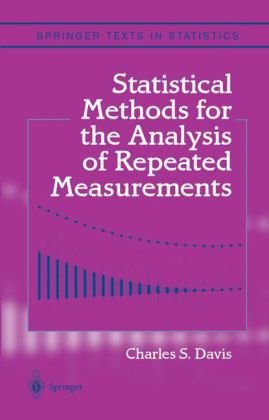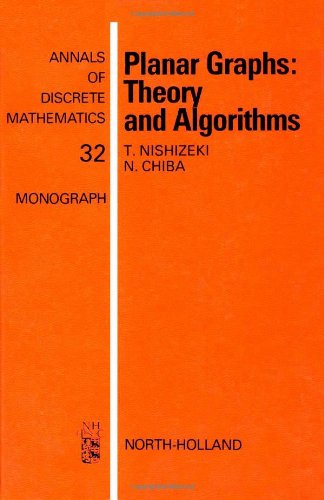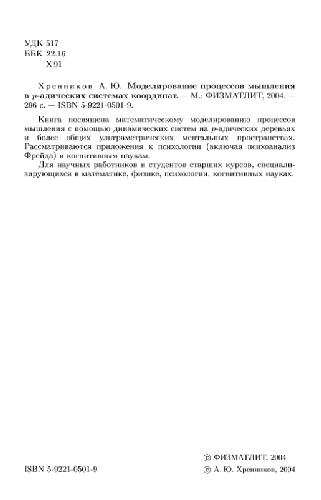Charles S. Davis0387953701, 9780387953700, 9780387215730
Table of contents :
Preface……Page 6
Contents……Page 10
List of Tables……Page 16
List of Figures……Page 24
1.1 Repeated Measurements……Page 26
1.2 Advantages and Disadvantages of Repeated Measurements Designs……Page 27
1.3 Notation for Repeated Measurements……Page 28
1.4 Missing Data……Page 29
1.5 Sample Size Estimation……Page 33
1.6 Outline of Topics……Page 34
1.7 Choosing the “Best” Method of Analysis……Page 37
2.1 Introduction……Page 40
2.2 One Sample……Page 41
2.3 Multiple Samples……Page 46
2.4 Comments……Page 51
2.5 Problems……Page 53
3.1 Introduction……Page 70
3.2.2 The Wishart Distribution……Page 71
3.2.4 Hotelling’s T[sup(2)] Statistic……Page 72
3.2.5 Hypothesis Tests……Page 73
3.3.1 Methodology……Page 74
3.3.2 Examples……Page 75
3.3.3 Comments……Page 79
3.4.1 Methodology……Page 80
3.4.2 Example……Page 82
3.4.3 Comments……Page 85
3.5 Problems……Page 86
4.1 Introduction……Page 98
4.2.1 Notation and Assumptions……Page 99
4.2.2 Parameter Estimation……Page 100
4.2.3 Hypothesis Testing……Page 101
4.2.4 Comparisons of Test Statistics……Page 102
4.3.1 Methodology……Page 103
4.3.2 Example……Page 106
4.4.2 The Growth Curve Model……Page 108
4.4.3 Examples……Page 112
4.5 Problems……Page 119
5.1 Introduction……Page 128
5.2 The Fundamental Model……Page 129
5.3.1 Repeated Measures ANOVA Model……Page 131
5.3.2 Sphericity Condition……Page 134
5.3.3 Example……Page 136
5.4.1 Repeated Measures ANOVA Model……Page 137
5.4.2 Example……Page 140
5.5 Problems……Page 141
6.1 Introduction……Page 150
6.2.2 The Mixed Model……Page 151
6.2.3 Parameter Estimation……Page 152
6.2.4 Background on REML Estimation……Page 153
6.3 Application to Repeated Measurements……Page 155
6.4.1 Two Groups, Four Time Points, No Missing Data……Page 159
6.4.2 Three Groups, 24 Time Points, No Missing Data……Page 164
6.4.3 Four Groups, Unequally Spaced Repeated Measurements, Time-Dependent Covariate……Page 170
6.5.1 Use of the Random Intercept and Slope Model……Page 174
6.5.2 Effects of Choice of Covariance Structure on Estimates and Tests……Page 176
6.5.3 Performance of Linear Mixed Model Test Statistics and Estimators……Page 180
6.6 Problems……Page 181
7.1 Introduction……Page 194
7.2.1 The Multinomial Distribution……Page 195
7.2.2 Linear Models Using Weighted Least Squares……Page 196
7.2.3 Analysis of Categorical Data Using Weighted Least Squares……Page 200
7.2.4 Taylor Series Variance Approximations for Nonlinear Response Functions……Page 203
7.3.2 One Population, Dichotomous Response, Repeated Measurements Factor Is Unordered……Page 209
7.3.3 One Population, Dichotomous Response, Repeated Measurements Factor Is Ordered……Page 212
7.3.4 One Population, Polytomous Response……Page 216
7.3.5 Multiple Populations, Dichotomous Response……Page 221
7.4.2 Ratio Estimation for Proportions……Page 229
7.4.3 One Population, Dichotomous Response……Page 230
7.4.4 Multiple Populations, Dichotomous Response……Page 234
7.4.5 Assessing the Missing-Data Mechanism……Page 239
7.5 Problems……Page 245
8.1 Introduction……Page 264
8.2.1 The Hypergeometric Distribution……Page 265
8.2.2 Test of Randomness for a 2 x 2 Contingency Table……Page 266
8.2.3 Test of Randomness for s 2 x 2 Contingency Tables……Page 267
8.3 Application to Repeated Measurements: Binary Response, Two Time Points……Page 269
8.4 The Multiple Hypergeometric Distribution and Large- Sample Tests of Randomness for r x c Tables……Page 271
8.4.1 The Multiple Hypergeometric Distribution……Page 272
8.4.2 Test of Randomness for an r x c Contingency Table……Page 273
8.4.3 Test of Randomness for s r x c Tables……Page 274
8.4.4 Cochran–Mantel–Haenszel Mean Score Statistic……Page 276
8.5.1 Introduction……Page 278
8.5.3 The Mean Score Statistic Q[sub(M)] and the Correlation Statistic Q[sub(C)]……Page 280
8.6.1 General Association Statistic Q[sub(G)]……Page 283
8.6.2 Mean Score Statistic Q[sub(M)]……Page 285
8.6.3 Correlation Statistic Q[sub(C)]……Page 287
8.7 Use of Mean Score and Correlation Statistics for Continuous Data……Page 288
8.8 Problems……Page 289
9.1 Introduction……Page 298
9.2.1 Introduction……Page 299
9.2.2 Random Component……Page 300
9.2.5 Canonical Links……Page 304
9.2.6 Parameter Estimation……Page 306
9.3.1 Introduction……Page 311
9.3.2 Construction of a Quasilikelihood Function……Page 312
9.3.3 Quasilikelihood Estimating Equations……Page 314
9.4.1 Introduction……Page 316
9.4.2 Marginal Models……Page 317
9.4.4 Transition Models……Page 318
9.4.5 Comparisons of the Three Approaches……Page 319
9.5.1 Introduction……Page 320
9.5.2 Methodology……Page 321
9.5.3 Example……Page 326
9.5.4 Hypothesis Tests Using Wald Statistics……Page 333
9.5.5 Assessing Model Adequacy……Page 334
9.5.6 Sample Size Estimation……Page 335
9.5.7 Studies of the Properties of GEE……Page 336
9.5.8 Computer Software……Page 337
9.5.9 Cautions Concerning the Use of GEE……Page 338
9.6.1 Alternative Procedures for Estimation of GEE Association Parameters……Page 339
9.6.3 GEE1 and GEE2……Page 341
9.6.4 Extended Generalized Estimating Equations (EGEE)……Page 342
9.7 Random-Effects Models……Page 343
9.8.1 Introduction……Page 345
9.8.2 Univariate Cumulative Logit Models for Ordered Categorical Outcomes……Page 346
9.8.3 The Univariate Proportional-Odds Model……Page 347
9.8.4 The Stram–Wei–Ware Methodology for the Analysis of Ordered Categorical Repeated Measurements……Page 349
9.8.5 Extension of GEE to Ordered Categorical Outcomes……Page 356
9.9 Problems……Page 357
10.1 Introduction……Page 372
10.2 Overview……Page 373
10.3.2 Multiple Samples……Page 375
10.4.2 The Wei–Lachin Method……Page 380
10.4.3 The Wei–Johnson Method……Page 381
10.4.4 Examples……Page 387
10.5 Problems……Page 389
Bibliography……Page 398
B……Page 430
F……Page 431
K……Page 432
M……Page 433
R……Page 434
V……Page 435
Z……Page 436
F……Page 437
M……Page 438
R……Page 439
W……Page 440







Reviews
There are no reviews yet.